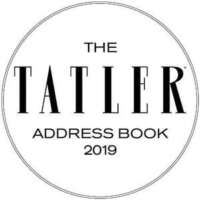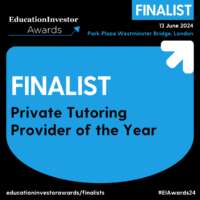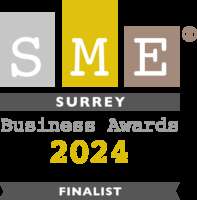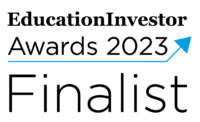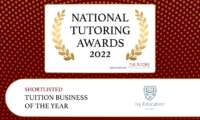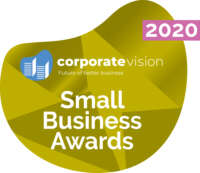Expert Insights
Understanding your child’s potential through assessments
Published 27th November 2019

In this blog we discuss the different types of assessment tests - Maths, English and Reasoning - which are used by schools and agencies such as Ivy Education to appraise a child’s potential. Speaking to our wonderful 7+/8+ assessor, Ilana King, we offer some ways you can actively engage with the outcomes of these assessments to help your child focus on the right areas.
There are an almost infinite number of ways a child’s potential could manifest. They can be artistic, bookish, active and sporty, social, empathetic, charismatic, or more suited to spatial than verbal learning. As a result, it can feel reductive to trammel young students through assessment tests in just English, Maths and Reasoning. But that is the reality you face as a parent wanting your child to be educated by a top school.
Accordingly, you need to think flexibly about a process that is inflexible. When preparing a child to take school entrance exams, the temptation is to bombard them with papers to practice, and tutors to cover every area. Instead, you need to use a scalpel and not a sledgehammer. Standardised assessment tests, and follow-up assessment sessions with an expert consultant can be used in tandem to gain a nuanced appreciation for your child’s potential and get them the targeted support they need.
Use standardised assessments to identify the broad metrics to focus on with your child
Standardised assessments - with every child sitting the same assessment paper, marked in a consistent manner - offer a fine platform on which to begin this process. They will highlight obvious areas of strength or weakness at a specific moment in time, being carefully designed to be appropriate for the age of the student sitting the test.
Based on the content or question types that a child will have to grapple with in an entrance exam, standardised assessments highlight gaps in knowledge that can be addressed by extra work or tutoring.
Given children are ultimately assessed on these objective criteria, it is invaluable to gain a sense of current performance by these same metrics, and from there a consultant, tutor or agency can direct parents to certain resources or services accordingly.
Going further - do they know the why as well as the how?
However, standardised assessments can only go so far. Whilst they might tell you how well the child is performing in broad terms and indicate towards certain areas where they are currently falling short, you often need more guidance to tell you why these things are the case.
For example, if a child has underperformed in the comprehension component of an English assessment, how do you know if they scored poorly because they truly didn’t understand the text, or if in fact they understood the inference but just couldn’t put it into an answer? In creative writing, meanwhile, a child might know how to structure a story, but not how to change the subject matter to be appropriate to the given title or theme. Or, conversely, there may be areas that suggest strong performance, but in fact mask a lack of real understanding. In a one-off assessment test there is always the possibility for anomalous results or performance.
To pick up on these kinds of intricacies, our expert assessor Ilana King recommends a follow-up session to the standardised assessment. This 1-on-1 session is non-standardised and flexible, involving lots of talking and vocal reflections on different activities and question types.
The purpose of this session is to understand how the child learns and identify those subtleties that the standardised assessment might have overlooked. Although the tests and metrics on which children are judged are inflexible and objective, the process needn’t be. Curiosity and learning are a subjective and highly individual process; there are always different paths to choose from which nonetheless arrive at the same destination.
So, consider a more subjective assessment alongside a standardised one. Such a session will not only help you focus on your child’s strengths and make them feel more confident, it will save time by clarifying necessary improvements. Please get in touch with us if you’d be interested in knowing more about this process.
Maths, English or Reasoning: which grants most understanding of a child’s potential?
On the surface, all of the different assessment types test different skills. Literacy, numeracy and spatial logic are all covered, and taken together provide an opportunity for different learning styles to come to the fore (though some more than others). The results, used together, give an indicator of academic potential in a wide sense. So on the whole no single style of assessment gives more of an indicator than the others of a child’s potential. The point is that the different assessments work in tandem.
Having said that, there is one core skill which is used by all the different styles of assessment: comprehension skills, and specifically being able to interpret the written instructions of an exam paper.
For example, in Maths assessments, word problems will test a child’s ability to apply their understanding of mathematical operations only once they have interpreted how these operations are to be applied. In Reasoning, meanwhile, there is a similar emphasis on the student being able to understand the question being asked and read the instructions accurately and thoroughly. Whilst practice (and tutoring) can develop familiarity in the question types of a Reasoning paper, in an entrance exam the child will still have to take care to read and comprehend all instructions.
So, the importance of literacy and reading confidence cannot be overstated. Make sure your child is reading and enjoying reading! It will help them in almost every aspect of their education at this stage.
Beyond that, think flexibly around the inflexible. Standardised and non-standardised approaches to assessment can work together to provide you with the refined approach your child needs to keep them happy and help them prepare for entrance exams and beyond.






